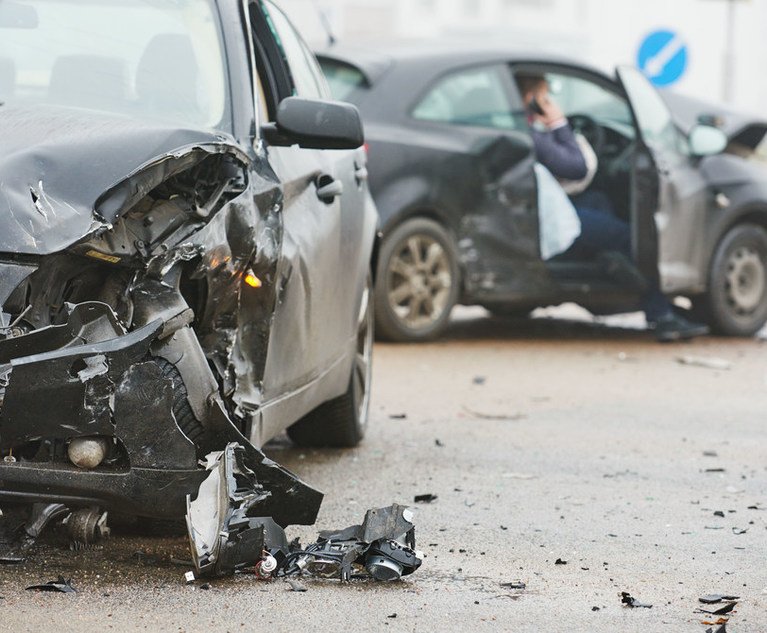Fraudulent insurance claims can be difficult to analyze.Determining whether a vehicle has been damaged by hail orintentionally dented or scratched, however, requires only astraightforward inspection, some basic facts about hail and weatherconditions, and a good camera.
|The process demands a basic understanding of the characteristicsof hail. Hailstones vary in size, shape, and hardness. Generally,the larger their size, the fewer the hailstones and the fartherapart they fall. More than 60 percent of hailstones are relativelysmooth and nearly spherical; however, sometimes hailstones arejagged or even elliptical in shape. Hardness also is a key factor,as harder hailstones offer a greater ability to damage vehiclepanels.
|Typically, wind-driven hailstones impact everything that isunsheltered in a random pattern. Surfaces facing the wind willincur greater impacts than those on the leeward side. The leewardsurfaces are effectively sheltered and suffer only glancingblows.
|Hail's effect on a vehicle's metal panels is determined by theattributes of the hailstones and the type of metal, thickness,profile, and support. Smaller and less dense hailstones may notdent panel metal but will remove oxides from paint on the panelsurface, thus leaving evidence of the collision, known as a spattermark.
|Metal thickness also determines whether the panel will bedented. Testing and observations have shown that the threshold sizefor hail to dent a steel vehicle body panel is hard ice one inch indiameter. Softer aluminum panels and bright metal trim material maybe dented by hard ice that is one-half inch in diameter.
|Hail that impacts a metal vehicle panel produces a dent that isconical in shape and has shallow sides. The center of the dentusually sustains a slight crease and no loss of paint. With paintintact, most dents can be removed without painting the vehicle.Thus, hail-caused dents can be removed by having the vehiclerepaired at a business that does paintless dent removal.
||Because hailstones fall randomly and, generally, arewind-driven, impact marks will be distributed randomly on exposedsurfaces, usually striking from one direction, that of the storm.The windward side of a vehicle will sustain greater damage thanthose panels protected by the other vehicle sides, buildings, oradjacent automobiles. Any vehicle panels elevated above nearbyprotection (neighboring objects, such as other cars or fences) andon the windward side will sustain greater impact and damage. Allexposed surfaces will be impacted including the softer, more-easilydamaged components of vehicles, such as bright trim.
|Historical Research
|The first step in assessing vehicle damage is to obtainbackground information from the owner as to when and where thevehicle was located at the time it was impacted. Obtain weatherrecords for the incident time and location, including publiclyreported facts about hail size and storm direction, and assess thevehicle damage in light of that information.
|If possible, inspect the vehicle at the incident location toconfirm whether any environmental factors such as trees, buildings,or other obstructions could have shielded the vehicle and affectedthe distribution of the dents. For identification purposes,document the vehicle's make, model, color, vehicle identificationnumber, license plate number, mileage, and date of manufacture.Also record its exterior characteristics, such as composite oraluminum body panels and other critical trim pieces.
|Before inspecting for hail damage, be sure that the vehicle'ssurface is clean. If the vehicle is not clean, it must be washed toensure that all dents are observed and that the subtle details ofeach dent will not be obscured. Closely examine each dentpanel-by-panel, and number and list its characteristics. Look forthe presence of creases or scratches and whether these impacts havea half moon shape, round bottom, and consistent size, as well asany other distinguishing characteristics. Mark dents withcontrasting-colored tape placed adjacent to the dent, using variouscolors to differentiate types of dents, e.g., blue for dents withtypical creases, white for dents with scratches in the dent center.
|Dents that are caused by natural hail will vary in size, haveshallow bottoms, and have very light creases across their widths. Ahail-caused dent will not exhibit a scratch in its center, will berandomly located on a panel, and will not be arranged in a patternin relation to other dents. Natural hail is relatively soft and,typically, does not harm paint.
|On the other hand, intentional, mechanically caused dents oftenare created with metal tools that tend to be much harder thannatural hail. As a result, marks made by metal tools generally areuniform in size with sharp, crescent-shaped creases, accompanied byscratches in the paint. When evaluating the dents on each panel, beaware that door-dings, scratches, and pebble-chips, all from normalwear, are considered unintentional mechanical damage. Theseimperfections are easily identified and typically exist where haildents would not occur. A small amount of unintentional damage is tobe expected, especially with older vehicles.
|Next, step back and examine and evaluate the dents (nowindicated by pieces of tape) on each panel to determine if thedistribution is random or if there are patterns to the dents suchas circles, triangles, arcs, or straight lines. Multiple dents inpatterns, or non-random dent distributions, indicate intentional,mechanically caused damage.
|Finally, the entire vehicle must be examined to evaluate theoverall dent distribution. A greater number of dents on flat panelsand a few dents on one side of the vehicle are typical of thewind-blown characteristics of hail damage. The distribution of thedents will be directional, and dents usually will not be present onall panels of the vehicle. A few dents or no dents on flat panelsand numerous dents on all side panels are common characteristics ofintentional mechanical damage.
|To document the damage, photograph the vehicle with the tapeattached. Take general photographs of the vehicle and close-ups ofeach panel. Take several close-ups of dents to show any non-typicalcharacteristics, such as scratches in the paint, sharp creases, ordeep dents. Sometimes, close-up examination of a scratch in thedent center can lead to identification of the tool used to make thedent.
|After evaluating the characteristics of each dent, thedistribution of dents on each panel, the overall distribution ofdents on the vehicle, and the weather data, the true cause of thedents may be assessed: hail-caused or mechanically generated.
|Robert N. Fleishmann is a licensed Professional Engineerwith Haag Engineering Co.
Want to continue reading?
Become a Free PropertyCasualty360 Digital Reader
Your access to unlimited PropertyCasualty360 content isn’t changing.
Once you are an ALM digital member, you’ll receive:
- All PropertyCasualty360.com news coverage, best practices, and in-depth analysis.
- Educational webcasts, resources from industry leaders, and informative newsletters.
- Other award-winning websites including BenefitsPRO.com and ThinkAdvisor.com.
Already have an account? Sign In
© 2024 ALM Global, LLC, All Rights Reserved. Request academic re-use from www.copyright.com. All other uses, submit a request to [email protected]. For more information visit Asset & Logo Licensing.








